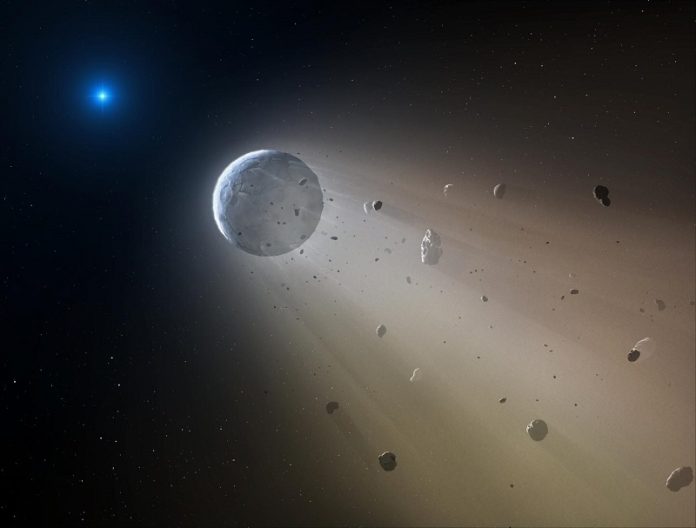
When we first began searching for planets around other stars, one of the surprising discoveries was that there are planets orbiting white dwarfs.
The first exoplanets we ever discovered were white dwarf planets.
Of course, these planets were barren and stripped of any atmosphere, so we had to look at main sequence stars to find potentially habitable worlds. Or so we thought.
As we discovered more white dwarf planets, it became clear that some of them might retain atmospheres and water.
Perhaps they were an outer planet with a thick atmosphere before their star swelled to a red giant, or perhaps some of the gas ejected by the star to become a white dwarf was captured by the world.
Regardless of the method, a small percentage of white dwarf planets retain an atmosphere.
But to be habitable, they would need to migrate inward to the white dwarf in order to enter the habitable zone.
We knew that planets could migrate during the red giant stage of their star, but it wasn’t until recently that computer simulations showed they could move close enough and remain in stable orbits within the potentially habitable zone of a white dwarf.
So we now know that while the odds are long, it is possible for white dwarf stars with water-rich atmospheres to exist.
But there’s one other problem. White dwarfs don’t have nuclear engines in their cores.
They can’t continue to generate heat for billions of years, but rather cool down gradually over time. This means that on a cosmic scale, their habitable zone shrinks and moves inward over time.
Any planet in the center of the zone would soon find itself on the outer edge of the zone and eventually in the cold, inhospitable beyond. But a new study contradicts this idea, at least for some white dwarfs.
The study notes that about 6% of white dwarfs seem to pause their rate of cooling. This is likely due to a process known as distillation.
Although the core of a white dwarf doesn’t undergo fusion, there are still processes such as radioactive decay and other nuclear interactions. As neutron-rich isotopes such as neon-22 distill, the interior of the white dwarf shifts, releasing a great deal of gravitational energy. This continues to heat the star, allowing it to maintain its temperature.
The team found that this distillation process can pause the cooling of a white dwarf for 10 billion years, meaning that the habitable zone of the white dwarf would be stable for that time.
That’s roughly the same timespan as the lifetime of the Sun, so there would be plenty of time for life to evolve and thrive.
This only occurs in a fraction of white dwarfs, but it means that our search for life on white dwarf stars should focus on those with paused cooling.
Written by Brian Koberlein/Universe Today.



